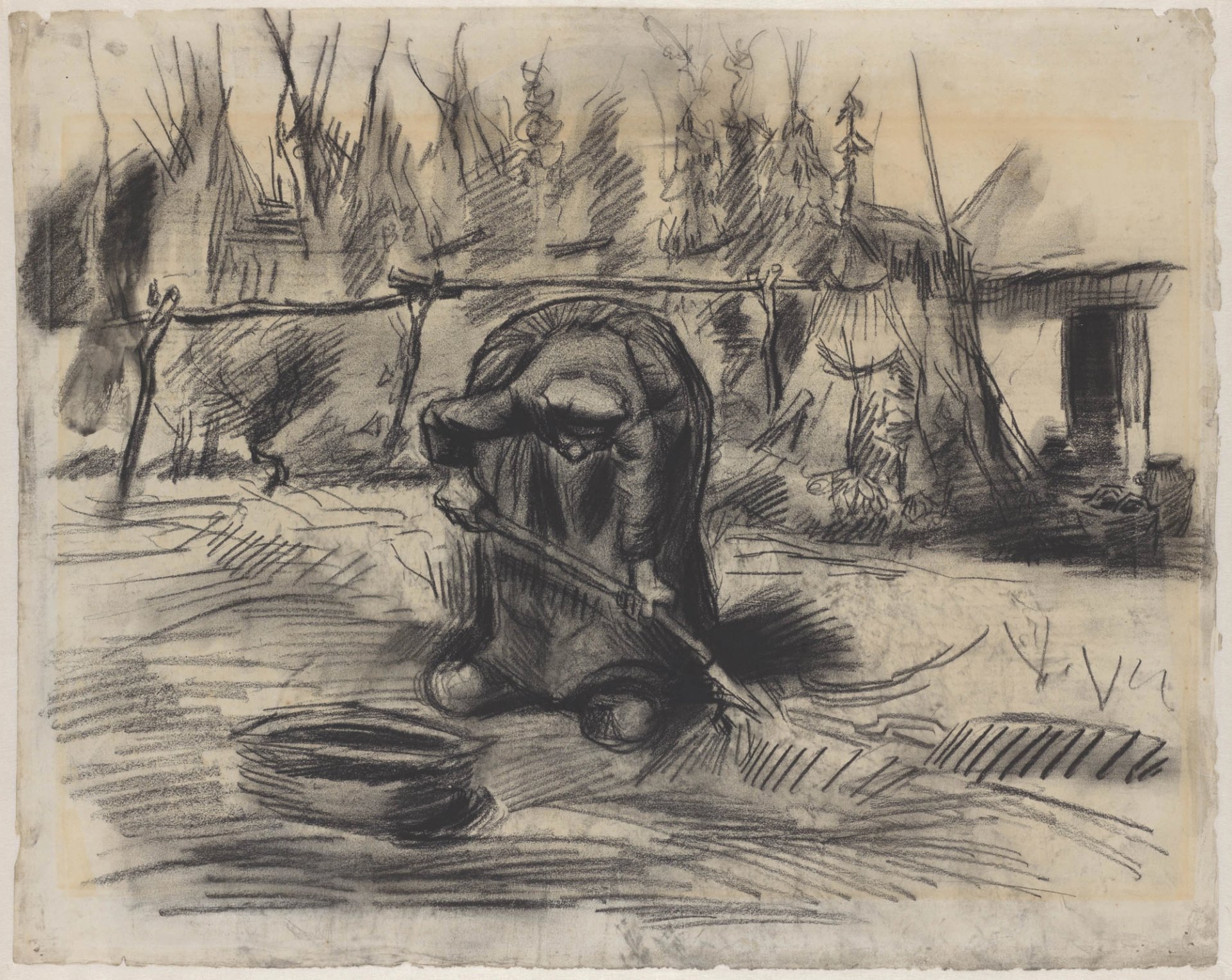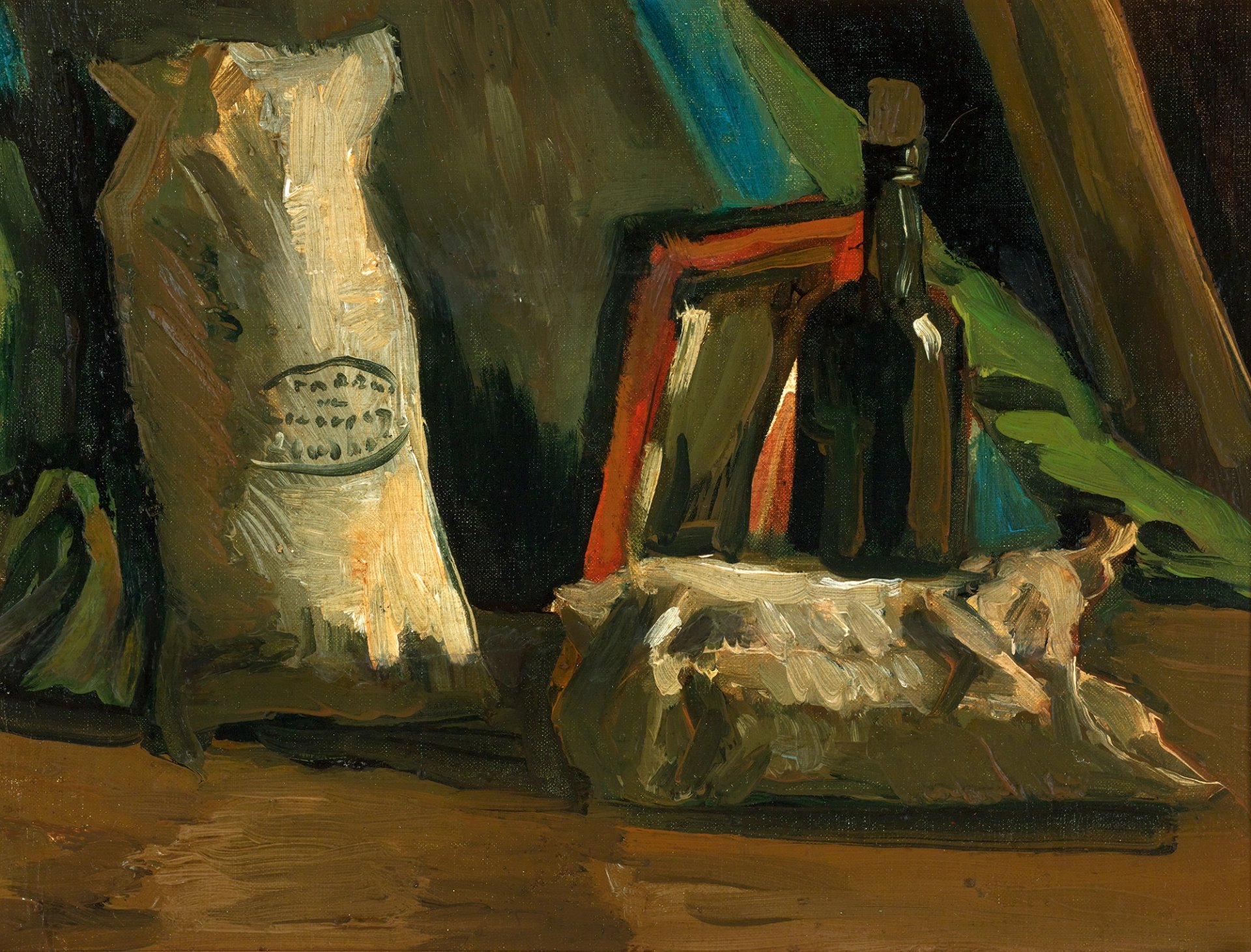A Peasant Woman digging (summer 1885) is among the least known Van Gogh paintings in UK public collections. An important early work, it is normally on display at the University of Birmingham’s Barber Institute. Next month it is going on a rare loan to Charleston, the Sussex home of the Bloomsbury Group. The Van Gogh will be the highlight of the exhibition Inventing Post-Impressionism: Works from the Barber Institute of Fine Arts (8 March–2 November).
However, a question mark hangs over the provenance of A Peasant Woman digging because it is recorded as having come from Germany, but the details of its owner there remain unknown. This has given rise to concerns that the work might possibly have belonged to a Jewish collector who faced persecution during the 1933-45 Nazi period.
Discovery
A Peasant Woman digging was a post-war Van Gogh discovery, a most unusual event given that unknown authentic paintings only turn up every 20 years or so. It first surfaced in 1957 at London’s Marlborough Fine Art. The gallery then listed its earlier owner simply as “private collection, Germany”.
Catalogues of Marlborough Fine Art, London, October 1957 (left) and Summer 1959 (right)
When the 1970 edition of Jacob Baart de la Faille’s Van Gogh catalogue raisonné—the definitive catalogue of the artist’s work—was published, A Peasant Woman digging was recorded in the literature for the first time. Before “private collection, Germany”, the work’s provenance entry in the catalogue listed an earlier owner: Hendrik Enno van Gelder (1876-1960), a Dutch art historian and museum director.
Van Gelder’s son, Jan Gerrit (1903-1980), was also an art historian and happened to be one of the seven editors of the de la Faille catalogue. He must have been aware that his father had once owned A Peasant Woman digging and sold it. Although the 1970 catalogue recorded his father’s name, the identity of the German private owner was not given.
The Barber Institute has been quite open about this provenance gap, and would welcome any further information. So far there have been no claims for A Peasant Woman digging, and we should stress there is no evidence that the Van Gogh was subject to a Nazi-era forced sale or looting.
However, until evidence is found to explain when and how the Van Gelder family sold the painting, and the identity of the German collector who purchased it is discovered, questions will remain.
The National Gallery misses out
A Peasant Woman digging dates from the summer of 1885, when Vincent was living with his parents in the southern Dutch town of Nuenen. He was then learning how to paint, making numerous pictures of the hard-working peasants. Van Gogh also made a drawing of a woman in a similar pose to the painting, with a wider view of a farm.

Van Gogh’s drawing of Peasant Woman digging (August-September 1885)
Kröller-Müller Museum, Otterlo
After the painting A Peasant Woman digging was exhibited by Marlborough Fine Art in 1957, it was bought by Gillian Solomons (later Sinclair-Hogg, she died in 1997). We can reveal that in July 1959 she offered the Van Gogh on loan to the Tate, but only on a very short-term basis, which was unacceptable. In February 1961 she re-offered the picture for six months, and on this basis that the Tate trustees accepted and displayed it.
However, in June 1961, Solomons informed the Tate that owing to “a completely unforeseen change in her circumstances” she needed to sell the painting. At this time Tate had handed over responsibility for late-19th century acquisitions to the National Gallery, so the offer to purchase the work was passed on to them.
What transpired next at the National Gallery provides a fascinating insight into mid-20th century attitudes towards Van Gogh’s art. The gallery’s archivist, Nicholas Smith, has found important documentation from this time, which he has revealed for us.
Smith’s investigation tells us that Martin Davies, the National Gallery’s keeper, was shown A Peasant Woman digging with a colleague on 26 July 1961. He reported back to the gallery’s chairperson, John Witt, that the picture would be “welcome as a gift, but [we] were not very enthusiastic, I am bound to say, about the possibility of purchasing it”.
Davies described the painting as “clearly an immature work, where perhaps the painter has not full mastery of the technique he was developing, and though it is clearly interesting for the study of Van Gogh’s development, it seemed to us hardly of sufficient importance to be a purchase”.
Commenting further, Davies added: “In parts the drawing seemed to us rather rough; but on the other hand the picture has considerable weight, which makes it carry well on the wall, and the colour is undoubtedly curious and interesting.”
Davies responded to Solomons a few days later that his trustees “could not contemplate the purchase”. After further correspondence with her, in August 1961 he explained that “your picture which, interesting and valuable as it is, does not fully exemplify Van Gogh’s most original contributions to painting”.
In October 1961 A Peasant Woman digging was sold to the Barber Institute for £10,000. As the painting goes on display at Charleston its present financial value remains highly confidential—but it would certainly be worth millions.
The Barber Institute is currently closed for building work and is due to reopen next year.
Other Van Gogh news
The New Orleans-based M.S. Rau gallery will be unveiling a Van Gogh still life at the Tefaf art fair in Maastricht (13-20 March). Still life with two Sacks and a Bottle (November 1884), like Peasant Woman digging, was also painted in Nuenen. It has only rarely been exhibited: the last time was in the Dutch city of ’s-Hertogenbosch, in 1988. The price at Tefaf: $4.75m.

Van Gogh’s Still life with two Sacks and a Bottle (November 1884)
M.S. Rau, New Orleans




